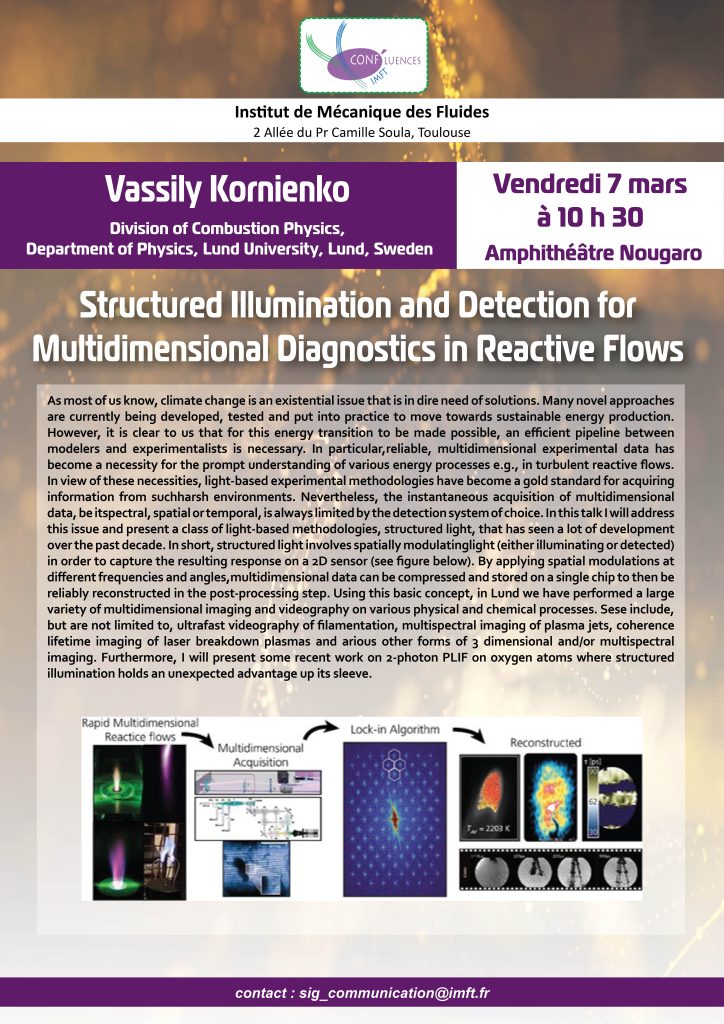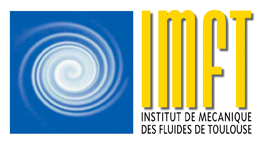Structured Illumination and Detection for Multidimensional Diagnostics in Reactive Flows

Conf’luence Vassily Kornienko
Division of Combustion Physics, Department of Physics, Lund University, Lund, Sweden
Vendredi 7 mars à 10 h 30 • Amphithéâtre Nougaro
As most of us know, climate change is an existential issue that is in dire need of solutions. Many novel approaches are currently being developed, tested and put into practice to move towards sustainable energy production. However, it is clear to us that for this energy transition to be made possible, an efficient pipeline between modelers and experimentalists is necessary. In particular, reliable, multidimensional experimental data has become a necessity for the prompt understanding of various energy processes e.g., in turbulent reactive flows. In view of these necessities, light-based experimental methodologies have become a gold standard for acquiring information from such harsh environments. Nevertheless, the instantaneous acquisition of multidimensional data, be it spectral, spatial or temporal, is always limited by the detection system of choice. In this talk I will address this issue and present a class of light-based methodologies, structured light, that has seen a lot of development over the past decade. In short, structured light involves spatially modulating light (either illuminating or detected) in order to capture the resulting response on a 2D sensor (see figure below). By applying spatial modulations at different frequencies and angles, multidimensional data can be compressed and stored on a single chip to then be reliably reconstructed in the post-processing step. Using this basic concept, in Lund we have performed a large variety of multidimensional imaging and videography on various physical and chemical processes. ese include, but are not limited to, ultrafast videography of filamentation, multispectral imaging of plasma jets, coherence lifetime imaging of laser breakdown plasmas and various other forms of 3 dimensional and/or multispectral imaging. Furthermore, I will present some recent work on 2-photon PLIF on oxygen atoms where structured illumination holds an unexpected advantage up its sleeve.
